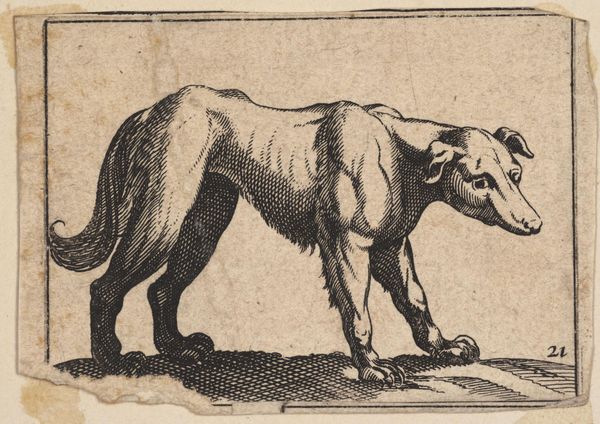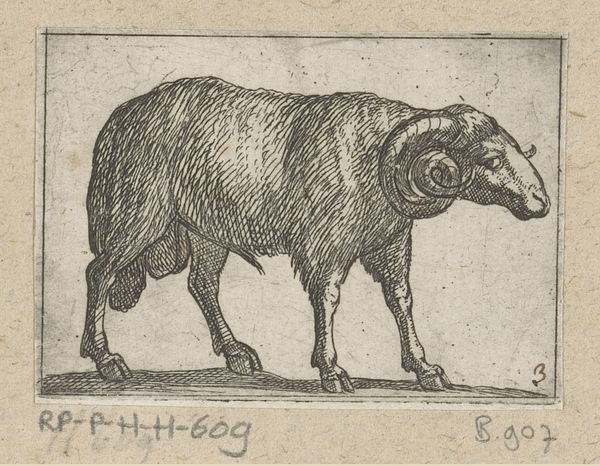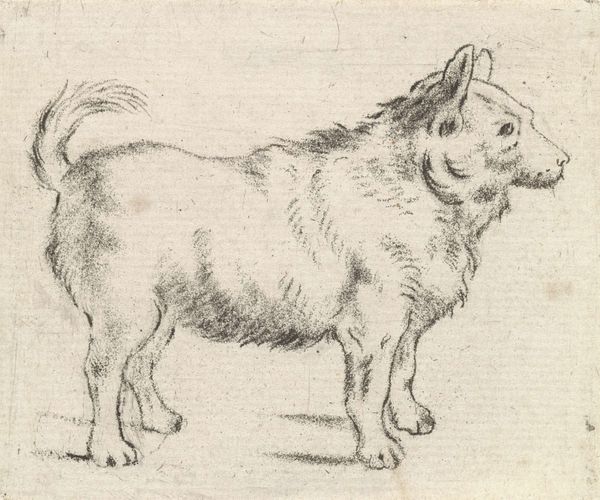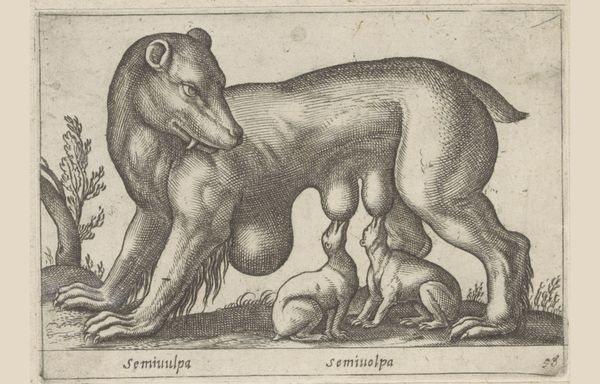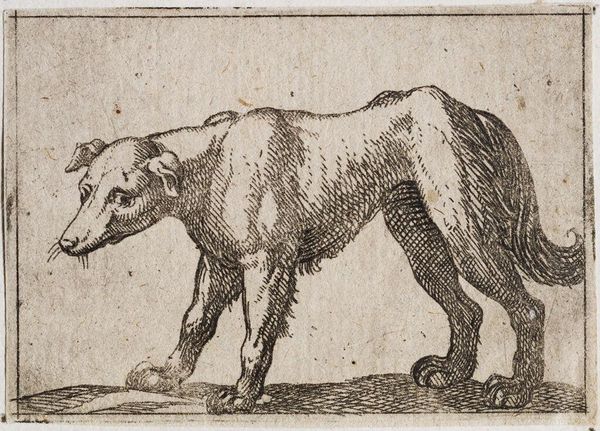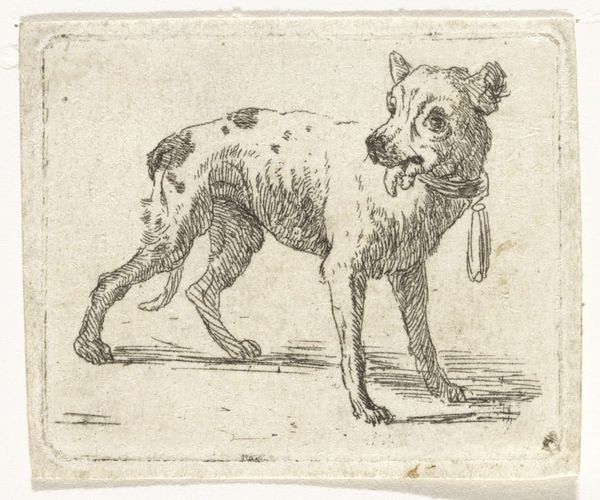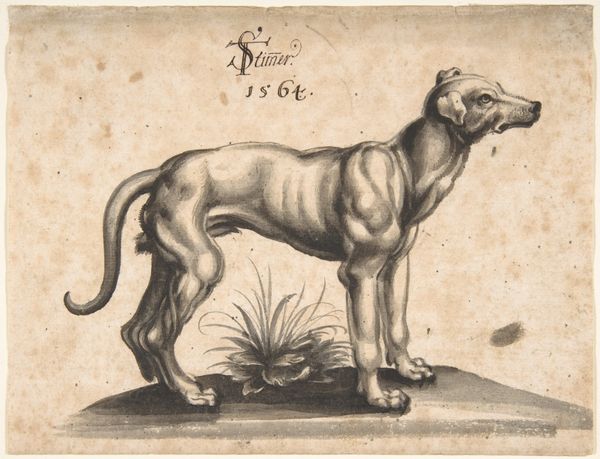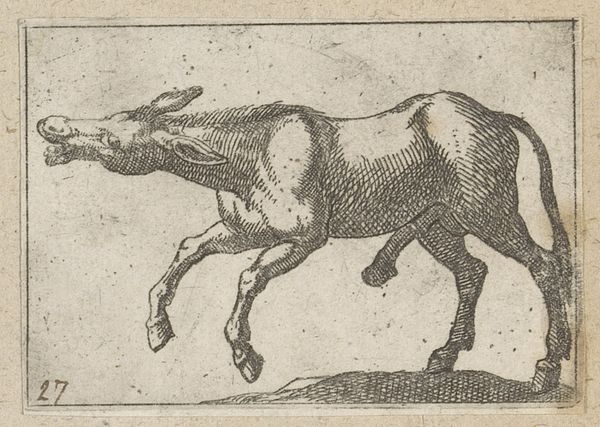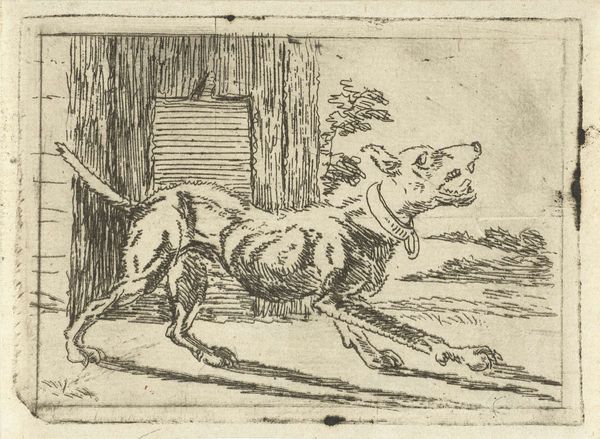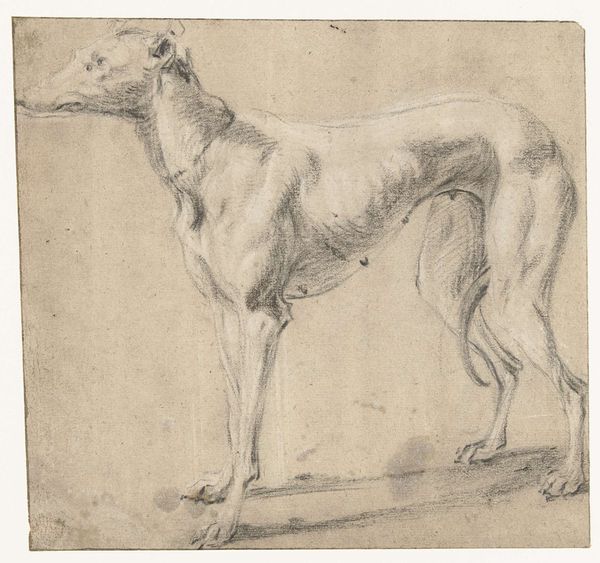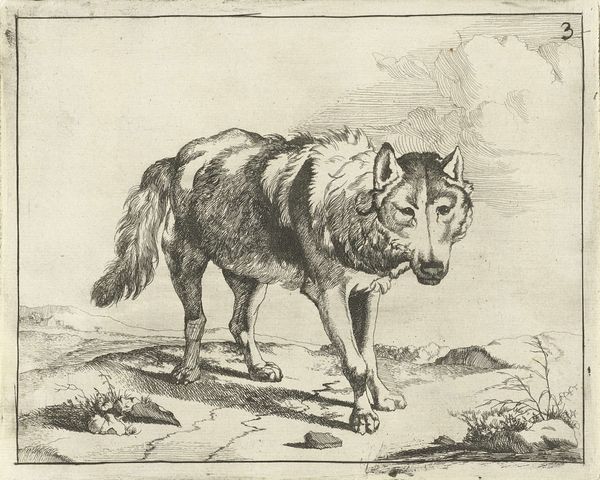
drawing, etching, paper, ink
#
portrait
#
drawing
#
aged paper
#
toned paper
#
light pencil work
#
quirky sketch
#
animal
#
etching
#
pencil sketch
#
dog
#
sketch book
#
figuration
#
paper
#
11_renaissance
#
personal sketchbook
#
ink
#
pen-ink sketch
#
sketchbook drawing
#
sketchbook art
Dimensions: height 43 mm, width 67 mm
Copyright: Rijks Museum: Open Domain
Antonio Tempesta made this small print of a standing dog in the late 16th or early 17th century, using etching, a form of printmaking. The image is made from the stark contrast between the ink and paper. To create this, the artist would have coated a metal plate with a waxy, acid-resistant substance, drawn the image with a sharp needle, exposing the metal. The plate was then immersed in acid, biting away the exposed lines. This process results in the crisp, precise lines we see here, capturing the form and texture of the dog's coat. Printmaking was revolutionary, as it allowed for the mass production and distribution of images. It democratized art, making it accessible to a wider audience. Looking at this print, we can appreciate the skill involved in etching, and the historical context in which it was made. It prompts us to reflect on the relationship between art, craft, and the means of production.
Comments
No comments
Be the first to comment and join the conversation on the ultimate creative platform.
